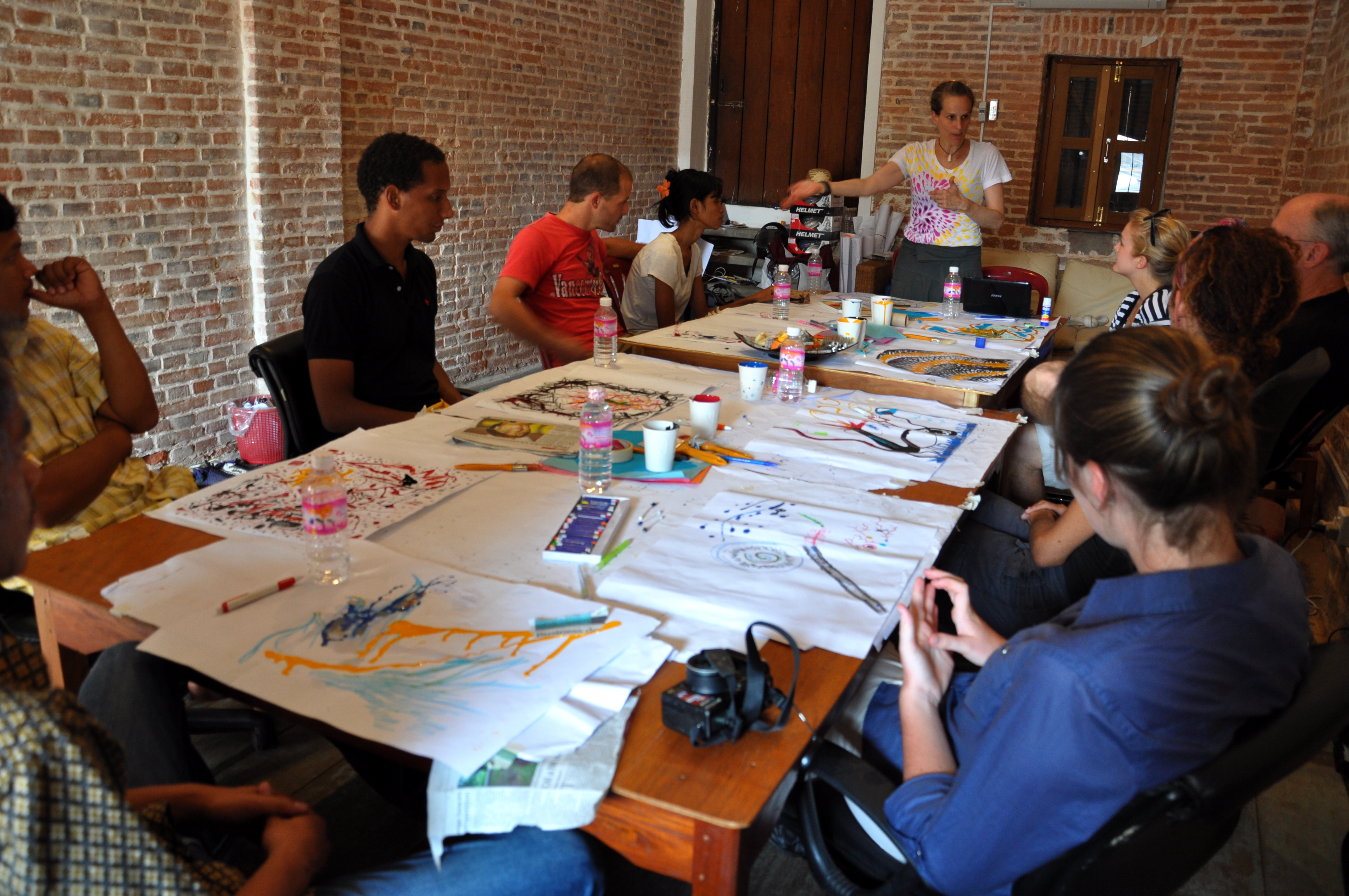Archives
March 19, 2015
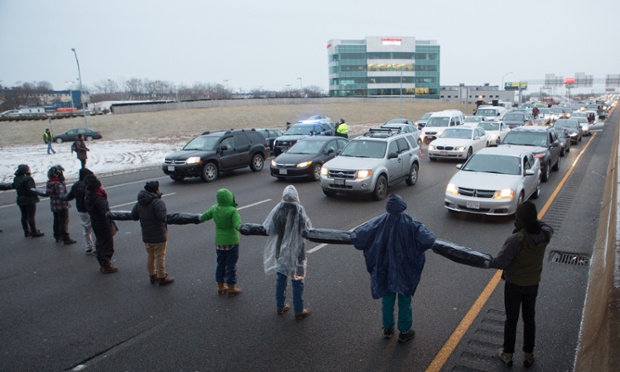
Image credit: The Guardian
Here is the fact: one segment of the population suffers daily humiliation from the sanctioned authorities. These humiliations too often lead to the most tragic of outcomes – murder by police. Another segment of the population, a much larger and dominant segment, does not have any direct experience of this sort of injustice. So they deny that it exists or that really matters that much. And here is where we find ourselves. Read More
March 16, 2015
I’ve long said that the ways in which work and organizational life are changing should be advantageous to those of us committed to social movements. Our organizational imperatives should never supersede our movement’s imperative. We should be willingly able to discard any organizational structure that does not serve our ultimate purpose. Read More
March 12, 2015
“We add value to society-at-large when we dare to connect.”

This week I was in a conversation with someone who asked me what the difference is between “networking” and “network building.” I’ve been asked this before, and certainly do not purport to have the right answer, but it became an opportunity to deepen the conversation that has been evolving in my work and head about what it means to develop potential through and in networks. Here is what popped to mind as a response, actually in the form of a series of questions
Are you thinking about others?
Read More
March 10, 2015
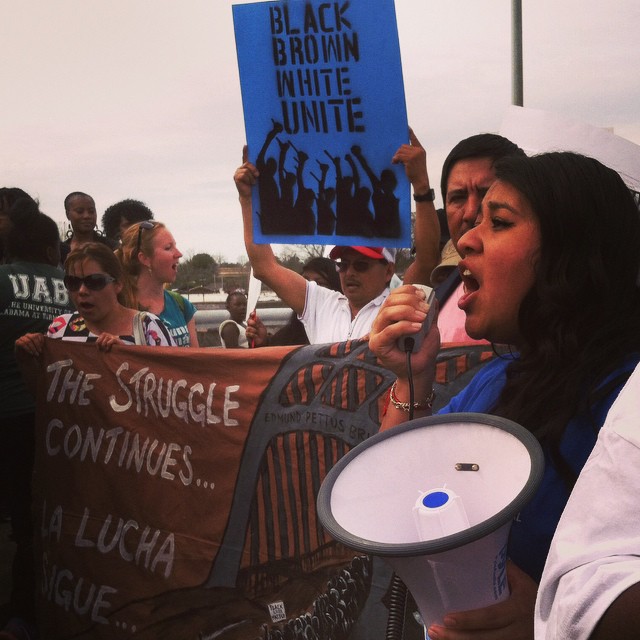
Alabama Coalition for Immigrant Justice marching across the Edmund Pettus Bridge on 3/8/15 by Jen Wilsea
The news channels have been flooded for the last few days with photos of the Obama family crossing the Edmund Pettus Bridge, the very bridge that Alabama state troopers and local police would not allow peaceful voting rights activists to cross as they attempted to march from Selma to Montgomery on March 7, 1965. That day is remembered as Bloody Sunday because police attacked the marchers with tear gas and billy clubs, resulting in the hospitalization of many protestors, including John Lewis.
Hour after hour ticked by as I stood on the main street in Selma on March 7, 2015. The sun was hot and I was getting sunburned. I stood in the middle of a sea of overwhelmingly Black Southerners waiting for our Black president to arrive. Words can’t describe the calm yet electric feeling in the air. It was powerful to wait, and to see the Edmund Pettus Bridge just a few blocks ahead, knowing that at any moment President Obama would stand there and speak to this crowd, this mostly Black, Southern crowd. Read More
March 5, 2015
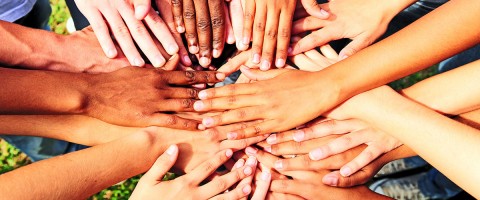
Two years ago, the Food Solutions New England (FSNE) Network Team, with support from IISC, committed to putting racial equity at the center of its work in trying to bring the six state region together around a vision of a more sustainable food system. Since formalizing that commitment with more than 150 delegates at last year’s annual Food Summit, and taking it to other food system-focused networks by invitation, the FSNE Network Team has faced the big question – Now what? How to deliver on this commitment and in a regional context? At the very least we continue to deepen our learning around and commitment to equity, modeling for and learning from and with others, growing and strengthening our understanding and action. A sub-committee of the Network Team, of which IISC is a part, has put together a racial equity plan consisting of various areas of activity, including education, communication, convening, network weaving/organizing and curating tools and resources for food system advocates at all levels (organizational, community, municipal, state).
One step that has just been launched is a bit of an experiment, and takes the 21 Day Racial Equity Habit Building Challenge from Debbie Irving (author of Waking Up White) and Dr. Eddie Moore, Jr. (founder of the White Privilege Conference), and turns it into a virtual community of practice. The ongoing challenge of the Network Team is to figure out a variety of means to keep knitting the network, and to keep communication and learning flowing. This is where the proliferation of social media tools and collaboration platforms has been extremely helpful. Read More
March 4, 2015
“You’ve got to keep asserting the complexity and the originality of life, and the multiplicity of it, and the facets of it.”
– Toni Morrison

I’ve been re-reading Niels Pfleaging’s short book Organize for Complexity and appreciating how it succinctly captures the current challenges for many groups and organizations trying to navigate complexity while clinging to old tools and beliefs. This can also be the nature of social change work amidst the significant shifts we are seeing. Here’s the trick – as things shift more, and more rapidly, people’s natural inclination may be to try to exert greater control or dig in to what is familiar but does not work. The more one does so, the worse things can get. As Pfleaging writes, we see a “high price for the illusion of control.” Within organizations this takes the form of various gaps – social, functional, and temporal – that make them increasingly irrelevant and ineffective. Responding to complexity requires (to borrow a phrase from Eugene Kim) new muscles and mindsets.
If I could summarize my own reading of Pflaegings’s book, I would put it this way – the world we are living into requires more integrated ways of seeing and doing, and this is hard to do (if not impossible) if people maintain highly differentiated ways of organizing themselves. There is really a baseline call for self-awareness and mindfulness so that one is able to respond not by default or fear, but with perspective and intention, which connects to the idea of “strengthening the network within” at the individual level. And it is important to reach out and connect this self-awareness to others . . .
“Problem-solving in a life-less system is about instruction. Problem-solving in a living system is about communication.”
-Niels Pflaeging
Read More
February 27, 2015
When the injustice done to Mike Brown and Eric Garner unfolded before our very eyes we witnessed the racial fault lines in this country as they made themselves painfully obvious. I witnessed anger, misunderstanding and resentment. I saw an oppressed community blamed, questioned and invalidated when we chose to protest and scream at injustice.
This is what happens when people don’t understand history. It is what happens when people don’t co-exist in community, in the context of authentic relationship.
It is what happens when we don’t understand that structural oppression is manifested across generations.
Lynching in America: Confronting the Legacy of Racial Terror, the horrific report released by the Equal Justice Initiative, and reported by the New York Times, is a painful but helpful way to give historical context to people’s rage.
The report names 4,000 lynchings between 1877 and 1950. 1950 was not too long ago; do you know anyone over 65?
It is good to claim our nation’s contribution to the idea of freedom and democracy. And it is also impossible to skip over the darker parts of our history. All of history is with us today.
“That was a long time ago” simply isn’t good enough.
Let us have the courage to face where we come from and let us have the dignity to right our wrongs.
#BlackLivesMatter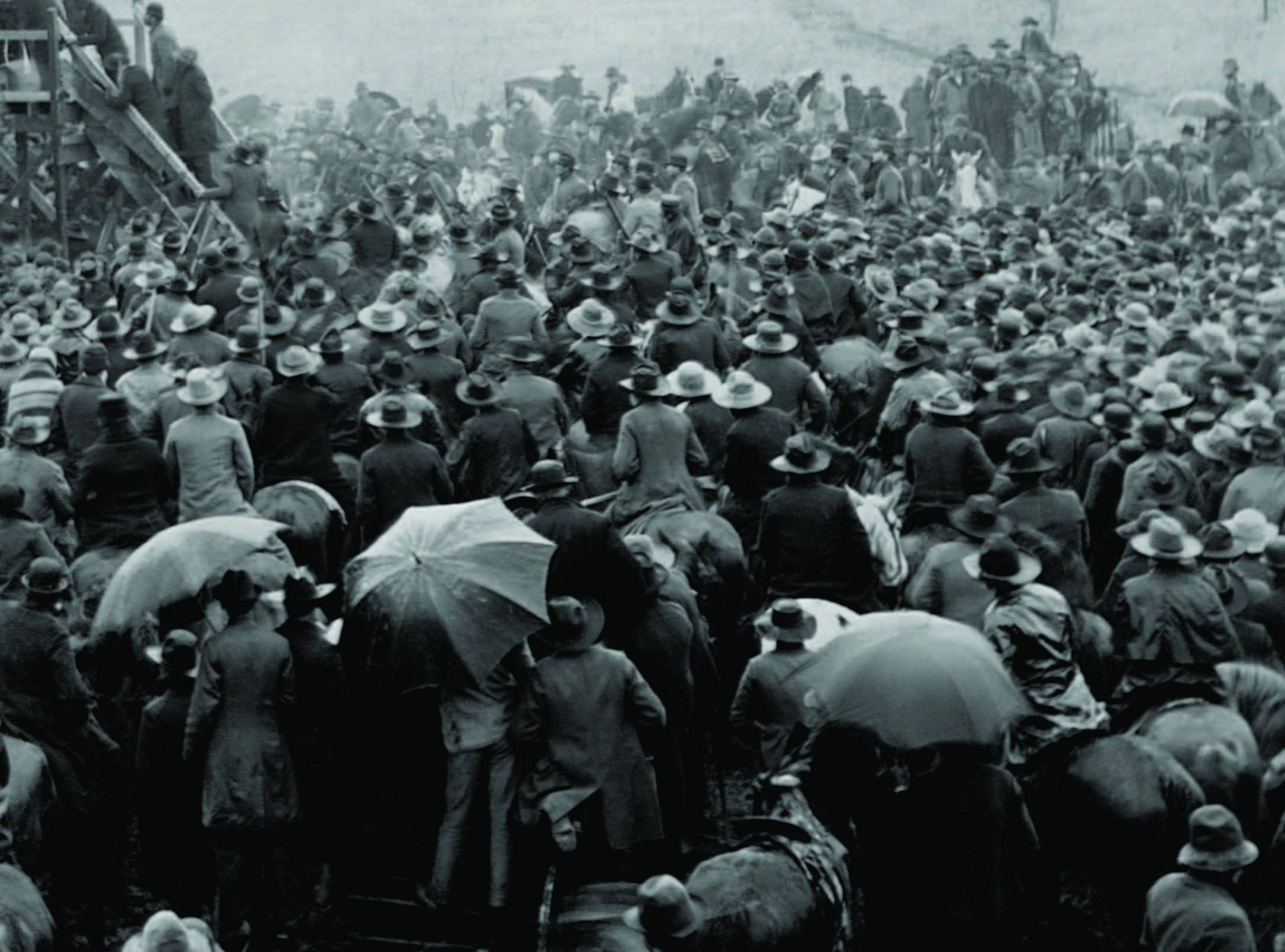 Read More
Read More
February 26, 2015

One of my mantras around network building and social change is that creating greater (and new forms of) connectivity is not simply a “so that” or a “nice to have” but is really an “as” and critical to the work of systems and structural change. This is echoed is some way, shape or form in many of the posts that appear in this space, and I think it bears repeating. Consider the following:
“Whether we learn how to love ourselves and others will depend on the presence of a loving environment. Self-love cannot flourish in isolation.”
bell hooks
- Isolation can kill. Science shows how loneliness and social isolation can ravage the body and brain. As noted in an article in The New Rebublic – “A partial list of the physical diseases thought to be caused or exacerbated by loneliness would include Alzheimer’s, obesity, diabetes, high blood pressure, heart disease, neurodegenerative diseases, and even cancer.” And who are the lonely? In many cases the poor, the bullied and oppressed, the “different.” When we consider how isolation can impact genes, we see how the cycles of poverty and oppression can play out at a fundamental psychobiological level. What this calls for, in part, is work that reconnects those who are currently in isolation and on the margins from/of myriad social goods including emotional support, tangible services and other critical resources.
- Disconnection breeds irresponsible behavior and prejudice. Science is helping us to understand the role of implicit bias in all of our lives and in society. Furthermore, the work of people like Paul Piff shows how those with considerable privilege who isolate from the rest of society (and keep to their own) tend to lose touch with empathy and any sense of egalitarianism. As my colleague Cynthia Parker notes, “Engaging with people unlike ourselves in situations that involve meaningful activity [and] counter-stereotypic experiences” helps to eliminate biases. In other words keeping and strengthening direct connection is a key part of the work for equity and democracy.
Read More
February 24, 2015
Today the role of the organization is in question. We make things happen through networks. Governance still matters, for both networks and organizations. Most of our models are obsolete; they don’t work so well. It is up to us to re-imagine governance because accountability is important.
I’ve seen Web of Change evolve over the years, and like to think I am part of its evolution. I am consistently impressed by the way this community is willing to transform and to govern itself.
Following is a link to the best board report I’ve ever seen. Can more of us get this good please?
Web of Change Board Report
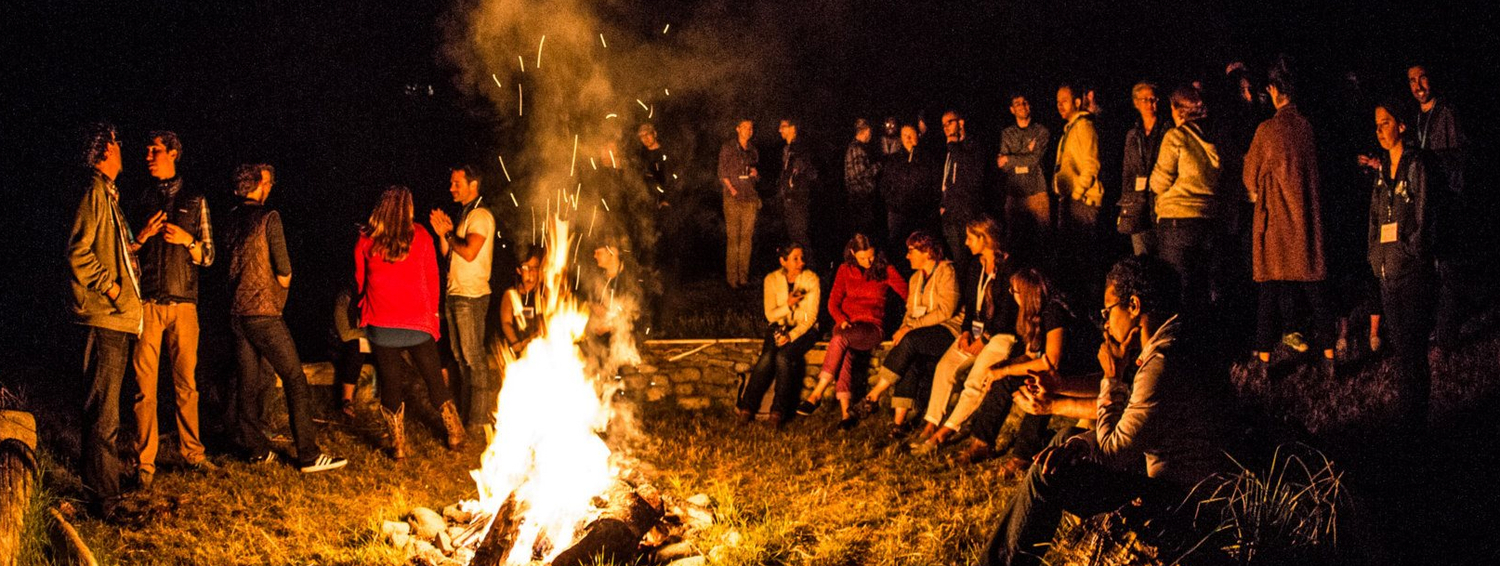
www.webofchange.com
Important considerations for collaborative social change work: What are considered “legitimate” ways of knowing and doing? Why? What does this allow? What doesn’t it allow?
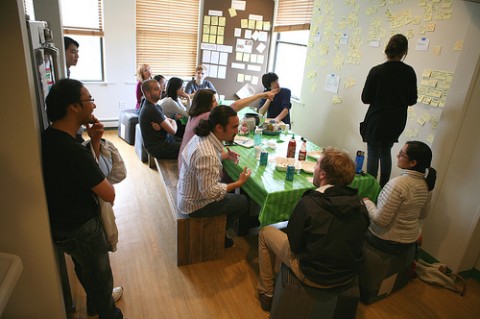
Photo by Juhansonin
I’m always interested to see diverse cognitive styles and preferences show up in the collaborative processes we help to design and facilitate at IISC. A classic difference is between those who bend more towards the analytical side of things and those who prefer to lead with intuition. This, of course, paints too stark of a dichotomy of what most people present overall, and context can often be a determinant in what people lead with. Nonetheless there are undeniable tensions that arise within groups about what constitutes “rigor” and “right method” for deriving what might be considered strategic insights. I would say that in many more “mainstream” (one might say “professional”) settings, it is often analysis and deference to some kind of “expert “that has a better chance of winning the day. And so I’ve been interested to come across a few resources that talk about and validate the place of intuition and iterative group visualization in coming up with good answers.
In a piece that appeared in the Harvard Business Review, Justin Fox writes about how instinct can beat analytical thinking. In particular, he lifts up the work of Gerd Gigerenzer from the Max Planck Institute for Human Development in Berlin, Germany. Gigerenzer’s research suggests that rational, statistical, analytical approaches work well in situations where one is able to calculate risk. The trouble, however, is that in many situations, decisions are made in considerable uncertainty, where risk and consequence are unknown because everything is quite dynamic. Read More
February 19, 2015
Appreciating our colleague, Maureen White, for bringing our attention to recent research on smart teams. She highlighted a couple of things when she shared the articles, and I thought it important to share them with you.
The smartest teams were distinguished by three characteristics:
- Their members contributed more equally to the team’s discussions, rather than letting one or two people dominate the group.
- Their members scored higher on a test called Reading the Mind in the Eyes, which measures how well people can read complex emotional states from images of faces with only the eyes visible.
- Teams with more women outperformed teams with more men. Indeed, it appeared that it was not “diversity” (having equal numbers of men and women) that mattered for a team’s intelligence, but simply having more women.
Read More
February 19, 2015
I live in New England, where everything is under a thick blanket of snow, and the temperatures are in the single digits. Many forms of transportation have come to a full halt. And I still needed to get to New York to lead a Facilitative Leadership training! My train was very late, and I realized, I could fume and panic, but that isn’t likely to change the situation. (Tried that. Didn’t work.) Since leadership often means noticing and naming what is really happening right now, I decided to take a few moments to notice what this weather can teach me about leadership.
 Read More
Read More

